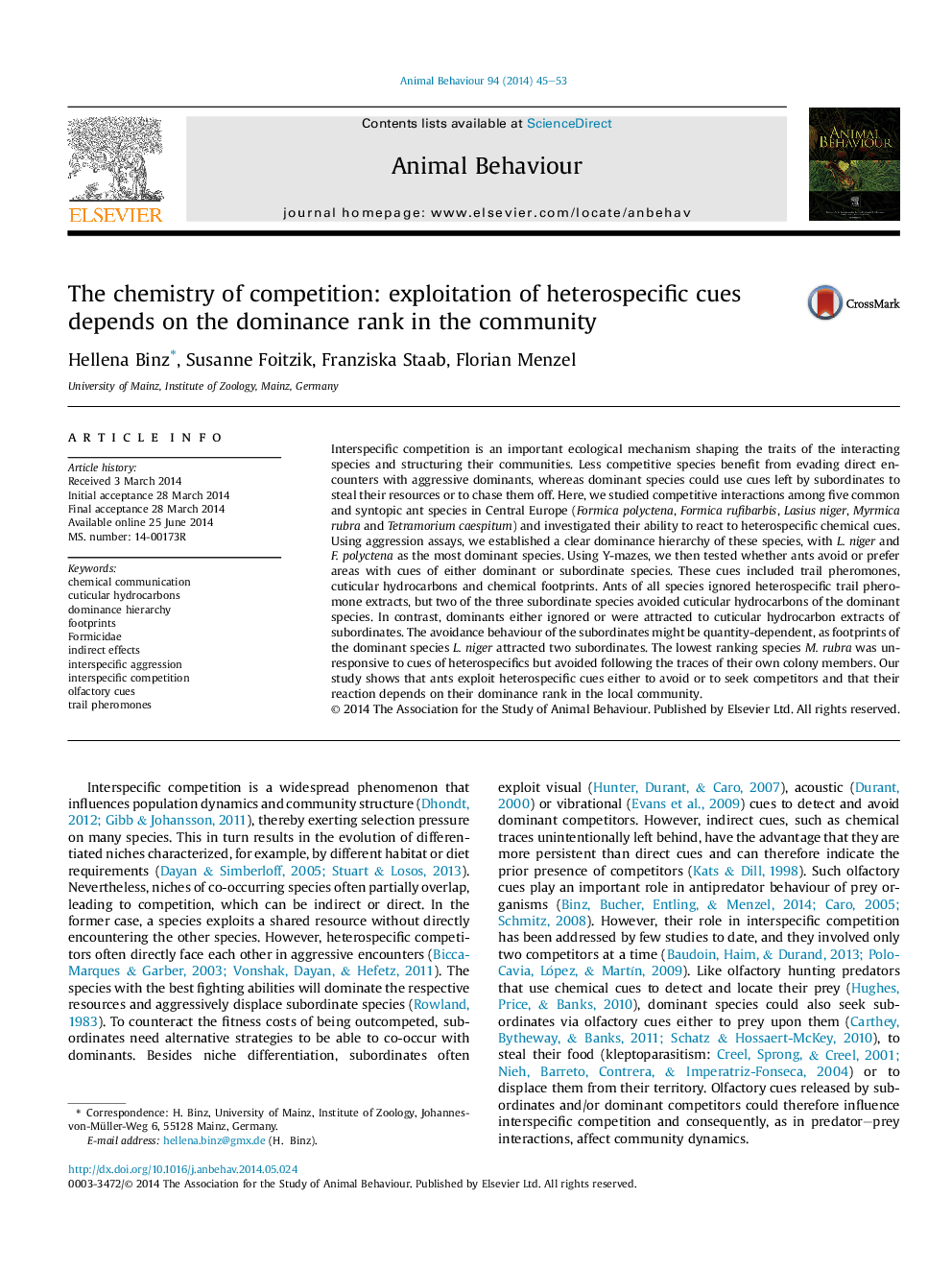| کد مقاله | کد نشریه | سال انتشار | مقاله انگلیسی | نسخه تمام متن |
|---|---|---|---|---|
| 2416420 | 1552234 | 2014 | 9 صفحه PDF | دانلود رایگان |

• Ants exploit heterospecific cues according to their dominance rank.
• Subordinates mostly avoid cuticular hydrocarbon extracts of dominants.
• Dominants ignore or follow cuticular hydrocarbon extracts of subordinates.
• Subordinates follow footprints of dominants.
• Chemical cues are important in structuring ant communities.
Interspecific competition is an important ecological mechanism shaping the traits of the interacting species and structuring their communities. Less competitive species benefit from evading direct encounters with aggressive dominants, whereas dominant species could use cues left by subordinates to steal their resources or to chase them off. Here, we studied competitive interactions among five common and syntopic ant species in Central Europe (Formica polyctena, Formica rufibarbis, Lasius niger, Myrmica rubra and Tetramorium caespitum) and investigated their ability to react to heterospecific chemical cues. Using aggression assays, we established a clear dominance hierarchy of these species, with L. niger and F. polyctena as the most dominant species. Using Y-mazes, we then tested whether ants avoid or prefer areas with cues of either dominant or subordinate species. These cues included trail pheromones, cuticular hydrocarbons and chemical footprints. Ants of all species ignored heterospecific trail pheromone extracts, but two of the three subordinate species avoided cuticular hydrocarbons of the dominant species. In contrast, dominants either ignored or were attracted to cuticular hydrocarbon extracts of subordinates. The avoidance behaviour of the subordinates might be quantity-dependent, as footprints of the dominant species L. niger attracted two subordinates. The lowest ranking species M. rubra was unresponsive to cues of heterospecifics but avoided following the traces of their own colony members. Our study shows that ants exploit heterospecific cues either to avoid or to seek competitors and that their reaction depends on their dominance rank in the local community.
Journal: Animal Behaviour - Volume 94, August 2014, Pages 45–53